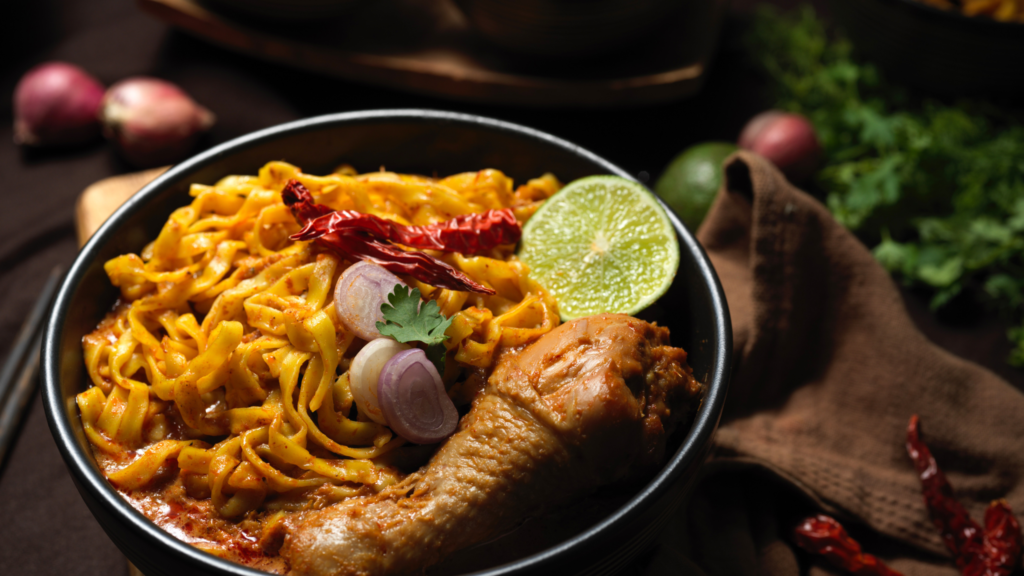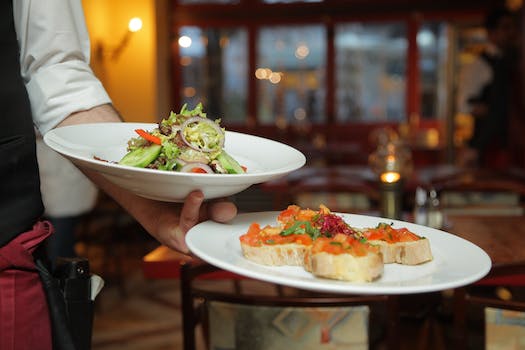Table of Contents
Thai flavors are some of the most unique and flavorful in the world. From the sweet and sour notes of tamarind to the spicy kick of chili peppers, Thai cuisine is a delicious blend of flavors that will tantalize your taste buds. The combination of herbs and spices used in Thai cooking creates a unique flavor profile that is both complex and delicious. Whether you’re looking for a light and refreshing dish or a hearty and spicy meal, Thai flavors have something to offer everyone.
Exploring the Complexity of Thai Cuisine: A Guide to the Essential Flavors of Thailand
Welcome to the wonderful world of Thai cuisine! Whether you’re a seasoned traveler or a novice foodie, you’ll find that Thai food is a unique and delicious experience. With its complex flavors and fragrant aromas, Thai cuisine is sure to tantalize your taste buds.
 So, what makes Thai food so special? Well, it’s all about the essential flavors. From the sweet and sour notes of tamarind to the spicy kick of chili peppers, Thai food is a symphony of flavors. Here’s a quick guide to the essential flavors of Thai cuisine.
So, what makes Thai food so special? Well, it’s all about the essential flavors. From the sweet and sour notes of tamarind to the spicy kick of chili peppers, Thai food is a symphony of flavors. Here’s a quick guide to the essential flavors of Thai cuisine.
Chili Peppers: Chili peppers are a staple in Thai cooking. They add a spicy kick to dishes and can range from mild to fiery hot.
Lemongrass: Lemongrass is a fragrant herb that adds a citrusy flavor to dishes. It’s often used in soups, curries, and stir-fries.
Garlic: Garlic is a key ingredient in many Thai dishes. It adds a pungent flavor and aroma to dishes.
Ginger: Ginger is a root that adds a warm, spicy flavor to dishes. It’s often used in curries and stir-fries.
Tamarind: Tamarind is a sweet and sour fruit that adds a unique flavor to dishes. It’s often used in soups and sauces.
Fish Sauce: Fish sauce is a salty condiment that adds a savory flavor to  dishes. It’s often used in curries and stir-fries.
dishes. It’s often used in curries and stir-fries.
Coconut Milk: Coconut milk is a creamy liquid that adds a rich flavor to dishes. It’s often used in curries and desserts.
These are just a few of the essential flavors of Thai cuisine. With its complex flavors and fragrant aromas, Thai food is sure to tantalize your taste buds. So, why not give it a try? You won’t be disappointed!
The Art of Balancing Sweet, Sour, and Spicy Flavors in Thai Dishes

When it comes to Thai cuisine, balancing the flavors of sweet, sour, and spicy is key. The combination of these three flavors creates a unique and delicious flavor profile that is sure to tantalize your taste buds.
The first step to balancing these flavors is to understand the basics of each flavor. Sweet flavors come from ingredients like sugar, honey, and coconut milk. Sour flavors come from ingredients like lime juice, tamarind, and vinegar. Spicy flavors come from ingredients like chili peppers, ginger, and garlic.
Once you understand the basics of each flavor, you can begin to experiment with different combinations. For example, you can combine sweet and sour flavors by adding a bit of sugar to a dish that has a lot of lime juice or tamarind. You can also combine sweet and spicy flavors by adding a bit of honey to a dish that has a lot of chili peppers.
When it comes to balancing sweet, sour, and spicy flavors, it’s important to remember that each flavor should be present in the dish, but not overpowering. You don’t want one flavor to be too strong or too weak. Instead, you want to find a balance between the three flavors.
One way to achieve this balance is to start with a base flavor and then add the other two flavors in small amounts. For example, if you’re making a dish with a lot of chili peppers, you can start with a base of sweet coconut milk and then add a small amount of lime juice and vinegar to balance out the spiciness.
Another way to balance sweet, sour, and spicy flavors is to use herbs and spices. Herbs like cilantro, basil, and lemongrass can add a subtle sweetness to a dish. Spices like turmeric, cumin, and coriander can add a bit of heat.
Finally, don’t be afraid to experiment with different combinations of flavors. Taste as you go and adjust the flavors until you find the perfect balance. With a little practice, you’ll be able to create delicious Thai dishes that are perfectly balanced in sweet, sour, and spicy flavors.
Exploring the Regional Variations of Thai Flavors: A Guide to the Different Cuisines of Thailand
Thailand is a country with a rich and diverse culinary culture. From the fiery curries of the south to the milder dishes of the north, the flavors of Thailand are as varied as its regions. Whether you’re a seasoned traveler or just getting started on your culinary journey, this guide will help you explore the regional variations of Thai flavors.
Northern Thailand:
The cuisine of Northern Thailand is known for its milder flavors and subtle spices. Dishes are often cooked with a variety of herbs and vegetables, and the use of chilies is kept to a minimum. Popular dishes include Khao Soi, a coconut-based curry soup, and Sai Oua, a spicy pork sausage.
Northeastern Thailand:
The cuisine of Northeastern Thailand is known for its bold flavors and intense spices. Dishes are often cooked with a variety of chilies, and the use of herbs and vegetables is kept to a minimum. Popular dishes include Som Tam, a spicy green papaya salad, and Larb Moo, a spicy minced pork salad.
Central Thailand:
The cuisine of Central Thailand is known for its balance of flavors and spices. Dishes are often cooked with a variety of herbs and vegetables, and the use of chilies is kept to a moderate level. Popular dishes include Pad Thai, a stir-fried noodle dish, and Tom Yum Goong, a spicy and sour soup.
Southern Thailand:
The cuisine of Southern Thailand is known for its fiery flavors and intense spices. Dishes are often cooked with a variety of chilies, and the use of herbs and vegetables is kept to a minimum. Popular dishes include Massaman Curry, a coconut-based curry, and Kaeng Tai Pla, a spicy fish curry.
No matter which region of Thailand you visit, you’re sure to find a delicious dish to enjoy. So get out there and explore the regional variations of Thai flavors!
Q&A
Q: What are some common Thai flavors?
A: Common Thai flavors include lemongrass, galangal, kaffir lime, fish sauce, chilies, coconut milk, and tamarind.
Q: How do Thai flavors differ from other Asian cuisines?
A: Thai flavors tend to be more pungent and spicy than other Asian cuisines, with a greater emphasis on herbs and spices. Thai dishes also often feature a balance of sweet, sour, salty, and spicy flavors.
Q: What are some popular Thai dishes?
A: Popular Thai dishes include Pad Thai, Tom Yum Soup, Green Curry, Massaman Curry, and Som Tam (Green Papaya Salad).Thai flavors are a unique and delicious combination of sweet, sour, salty, and spicy. They are a great way to add a unique and flavorful twist to any dish. With the right ingredients and techniques, Thai flavors can be used to create a variety of dishes that are sure to please any palate. Whether you’re looking for a light and refreshing meal or a hearty and flavorful dish, Thai flavors are sure to provide a delicious and unique experience.










